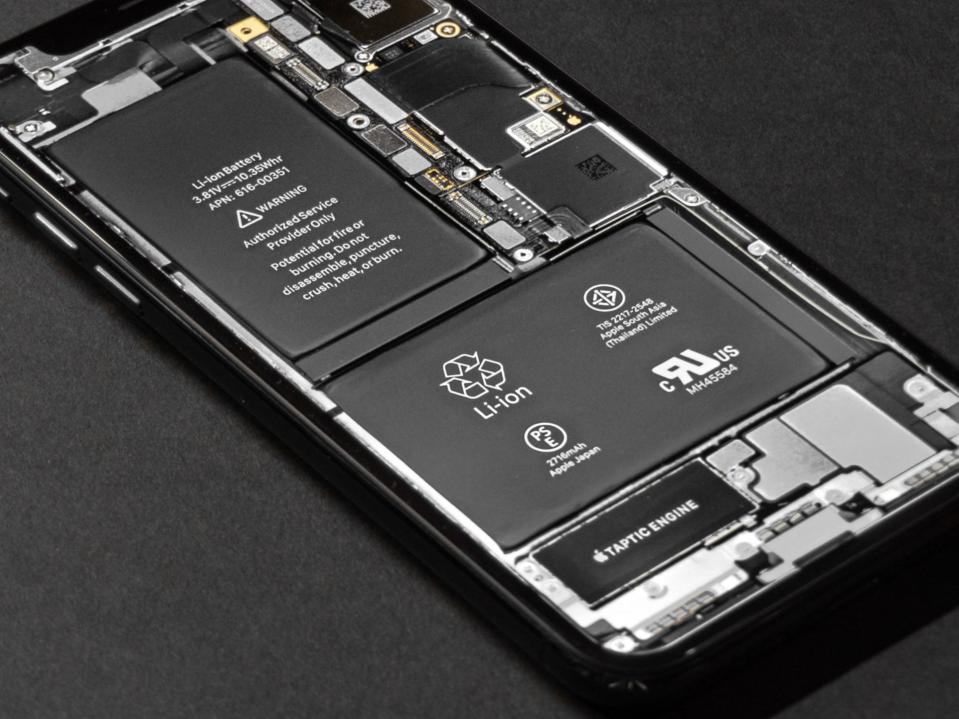New smartphone batteries could last for five years without breaking down

Smartphone batteries could last for up to five years with the imminent development of new technology, scientists have said.
Lithium-ion batteries, which most devices currently use, are notorious for degrading over time – which is why a new smartphone will last longer on a single charge than an old one.
This is because the graphic anodes (the negative terminal in batteries) that they use require a binder to keep it from falling apart when passing a charge between the electrolyte (the medium by which charge is passed) and the cathode (the positive terminal).
The most common binder is poly(vinylidene fluoride), or PVDF, but researchers from Japan Advanced Institute of Science and Technology suggest that a new binder - made from a bis-imino-acenaphthenequinone-paraphenylene (BP) copolymer – will be more effective.
Despite the difficult scientific name, the differences between a BP copolymer and the PVDF one are surprisingly simple: the BP binder has better mechanical stability and adherence to the anode, is more conductive, and makes a thinner electrolyte which means there is less resistance getting in the way.
It also does not react easily with the electrolyte, meaning that it will take significantly longer to break down.
Read more:
Starship SN15 test dates set as SpaceX launches debris hotline
Scientists connect human brain to computer wirelessly for first time ever
"Whereas a half-cell using PVDF as a binder exhibited only 65 per cent of its original capacity after about 500 charge-discharge cycles, the half-cell using the BP copolymer as a binder showed a capacity retention of 95 per cent after over 1700 such cycles," says Professor Noriyoshi Matsumi, who led the study alongside Professor Tatsuo Kaneko, Senior Lecturer Rajashekar Badam, PhD student Agman Gupta, and former postdoctoral fellow Aniruddha Nag.
Charge cycles are not easily converted into days, as they refer to the time for a battery to completely drain. Many modern smartphones can last for over 24 hours if not used intensively.
“You complete one charge cycle when you’ve used (discharged) an amount that equals 100 per cent of your battery’s capacity — but not necessarily all from one charge”, Apple explains, as it uses of Lithium-ion batteries in its iPhones and iPads.
“For instance, you might use 75 per cent of your battery’s capacity one day, then recharge it fully overnight. If you use 25 per cent the next day, you will have discharged a total of 100 per cent, and the two days will add up to one charge cycle. It could take several days to complete a cycle.”
However, even if one assumes that a phone user depletes the entire battery every day of use, the scientists’ findings, which have been published in ACS Applied Energy Materials, suggest that a battery could last for five years before it starts to deteriorate.
"The realisation of durable batteries will help in the development of more reliable products for long-term use. This will encourage consumers to purchase more expensive battery-based assets like electric vehicles, which will be used for many years," Professor Matsumi says.
These durable batteries could have significant impact for other technology, as well as consumer gadgets. Patients with artificial organs would benefit from medical equipment that lasts longer, with great economic and environmental gains.
This is not the only battery development scientists are working on. Researchers at MIT have discovered that using metal electrodes in place of the conventional graphite ones could drastically increase how many watt-hours are stored on lithium-ion batteries.
The entire Lithium-ion battery market could also be replaced by Lithium-sulfur batteries, since they are cheaper to produce and can be revitalised more easily after degrading – which could enable efficient electric transportation such as in unmanned aircrafts, electric buses, trucks and locomotives, scientists predict.

 Yahoo Finance
Yahoo Finance 